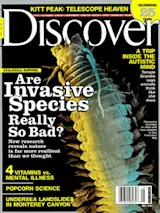Sleep
Humans fall into two camps when it comes to biological clockwork: early-to-bed, early-to-rise larks or late-night-loving owls who awaken long after the crack of dawn. As any parent knows, teenagers may take owlishness to extremes. But their sleeping in is not slacking off, says chronobiologist Till Roenneberg of the University of Munich in Germany: Biology is to blame.
Roenneberg and his colleagues surveyed the sleep habits of 25,000 Germans, aged 8 to 90, and found that as the teenage years wear on, the hour when kids go to bed and get up drifts later and later. It’s not that they’re sleeping more, Roenneberg says. Rather, their circadian clock is skewed. But not indefinitely: Around age 20, the pattern reverses. The clocks tick back, and young adults begin to go to sleep and wake up earlier and earlier. Eventually, their clocks coincide with those of older people.
The abrupt change, ...














